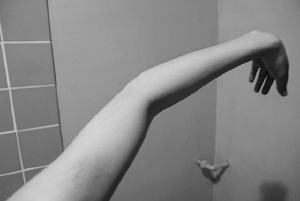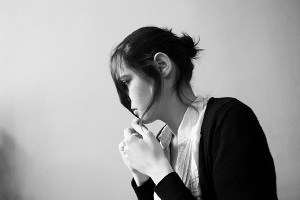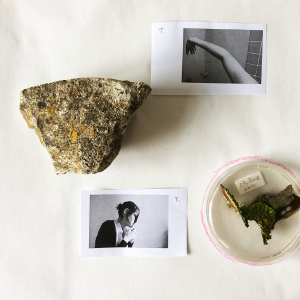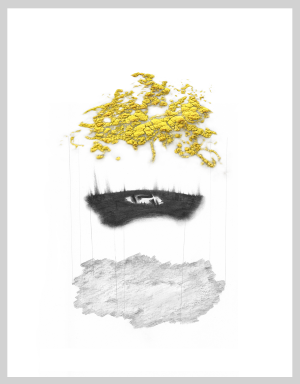BIOELECTRONICS, AESTHETICS & OTHER INTERESTING THINGS
Hello
My name is Smin Kim. I'm studying Media art and design (MFA) at Bauhaus University Weimar.
Currently living and working in Weimar. Nice to see you here!
Inspiration
Liquid Emulsion on stone
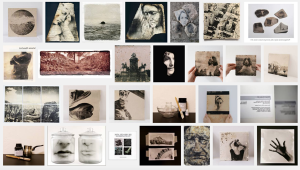
>>google search to Liquid Emulsion
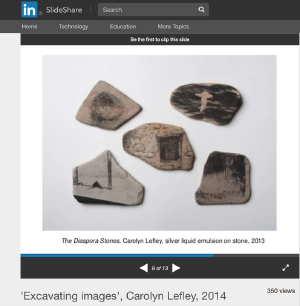
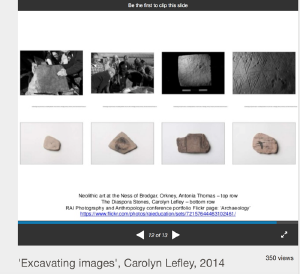
'Excavating images', Carolyn Lefley, 2014
Slides to illustrate a paper presented at the RAI Anthropology and Photography conference, British Museum. May 2014
http://www.slideshare.net/lefley/excavating-images-carolyn-lefley-2014
Liquid emulsion
=
With a liquid silver emulsion applications can be made to a variety of surfaces such as tile, glass, pottery, wood, canvas, stainless steel and coated metals. Brushing, dipping, and spraying are among the techniques employed for applying the emulsion to three-dimensional surfaces.
How to make it?
Alternative Photography - Printing Photos on Objects
http://www.instructables.com/id/The-Darkroom-Liquid-Light-Emulsion/
Another alternative way to use WAX
http://www.alternativephotography.com/wp/processes/liquid-emulsion/liquid-light-emulsion-on-wax
Books
Anthotypes – Explore the darkroom in your garden and make photographs using plants
http://www.alternativephotography.com/wp/processes/anthotypes/anthotypes
Lichen
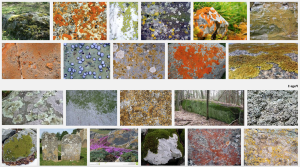
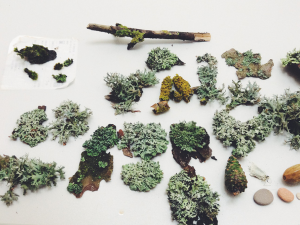
A lichen is a composite organism that arises from algae or cyanobacteria (or both) living among filaments of a fungus in a symbiotic relationship. The combined life form has properties that are very different from the properties of its component organisms. Lichens come in many colors, sizes, and forms. The properties are sometimes plant-like, but lichens are not plants. Lichens may have tiny, leafless branches (fruticose), flat leaf-like structures (foliose), flakes that lie on the surface like peeling paint (crustose),or other growth forms.
Lichens occur from sea level to high alpine elevations, in a very wide range of environmental conditions, and can grow on almost any surface.
Different kinds of lichens have adapted to survive in some of the most extreme environments on Earth: arctic tundra, hot dry deserts, rocky coasts, and toxic slag heaps. They can even live inside solid rock, growing between the grains. Some lichens do not grow on anything, living out their lives blowing about the environment. It is estimated that 6% of Earth's land surface is covered by lichen.
Symbiotic relation
A lichen is a composite organism that emerges from algae or cyanobacteria living among the filaments (hyphae) of a fungus in a mutually beneficial (symbiotic) relationship. The fungus benefits from the algae or cyanobacteria because they produce food by photosynthesis. The algae or cyanobacteria benefit by being protected from the environment by the filaments of the fungus, which also gather moisture and nutrients from the environment, and (usually) provide an anchor to it.
Evidence that lichens are examples of successful symbiosis is the fact that lichens can be found in almost every habitat and geographic area on the planet. Two species in two genera of green algae are found in over 35% of all lichens, but can only rarely be found living on their own outside of a lichen.
Growth rate
Lichens often have a regular but very slow growth rate of less than a millimeter per year. Different lichen species have been measured to grow as slowly as 0.5 mm, and as fast as 0.5 meter per year.
In crustose lichens, the area along the margin is where the most active growth is taking place. Most crustose lichens grow only 1–2 mm in diameter per year.
Source form Wikipedia, the free encyclopedia
https://en.wikipedia.org/wiki/Lichen
Lichen auf Stein
9.June // Blender Marker bought
10.June // Transfer image Experiments
1. Wood
2. Surface on wood
3. Flat stone
4. Making smooth flat stone
5. Curve stone
>>Test pictures using previous work
